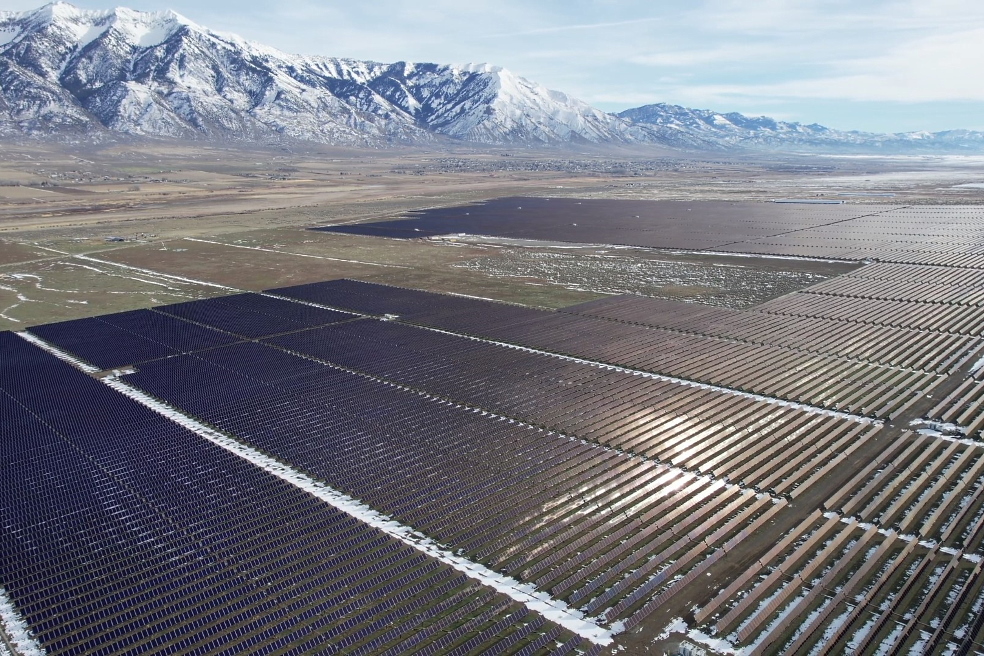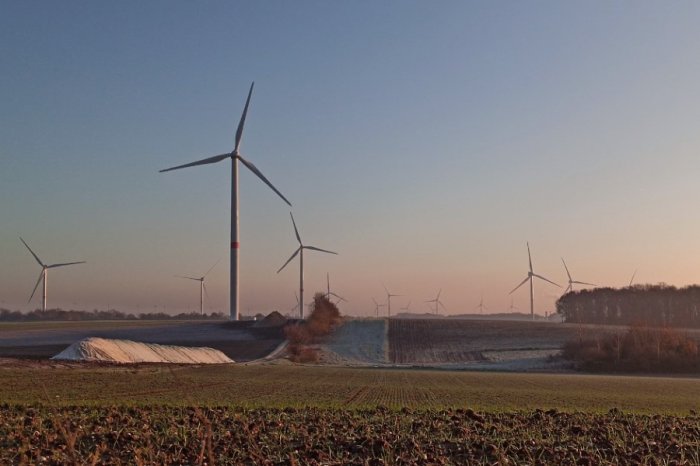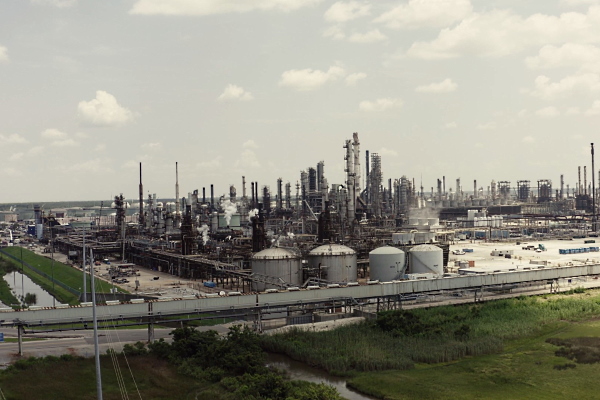To consider an application for financing, fill out the form and send it to us by e-mail along with the project brief, or contact our experts
Fortunately, these loans no longer make up a significant portion of their portfolios today.
According to a recent study, since the adoption of the Paris Agreement in 2015 until the end of 2021, financing of the fossil fuel and related energy sectors by the 60 largest banks has reached $4.6 trillion.
In this period, the scale of financial support for the coal, oil, gas and related energy sectors remained almost unchanged.
It was $723 billion in 2016 and $830 billion in 2019.
Subsequently, funding has declined due to the pandemic, reaching a "modest" value of $742 billion last year.
Fossil fuel projects account for 8% of the largest banks' loan portfolio
The largest loan portfolios in this area belong to American, Canadian and Japanese banks.In 2021 alone, 60 banks provided more than $185 billion in loans to 100 companies in the fuel sector, including companies like Saudi Aramco and ExxonMobil. Particularly troubling is the fact that capital-intensive projects have been financed, coupled with high and above-average environmental damage.
These include the following:
• Extraction of oil from tar sands financed by Canadian commercial banks. Lending to this sector increased by 50% in 2020-2021.
• Arctic gas and oil exploration funded by JP Morgan Chase, SMBC Group and others. This sector has attracted over $62 billion, predominantly from US banks.
• Long-term lending to the coal industry in developing countries. Chinese banking capital has been most active in the coal sector in recent times.
At the same time, the International Energy Agency announced last May that it would limit global temperature rise to 1.5 degrees Celsius by 2050.
To achieve this goal, it is necessary to refrain from financing new projects based on fossil fuels. Moreover, in order to limit global warming, carbon dioxide emissions must start to decline after 2025.
In fact, the situation does not look optimistic.
Most of the world's 60 largest banks have made climate commitments.
A gradual decarbonization of investment at most banks seems feasible given the relatively low proportion of high-carbon loans in their loan portfolios. Reclaim Finance estimates their average share at 8% among 60 global banks. In the case of Morgan Stanley, this is only 4%. In fact, that's over a hundred billion dollars feeding fossil fuel projects right now.
Evidence of the weak commitment of banks to climate protection is a careful analysis of their annual reports. Researchers from the University of Gothenburg analyzed the financing of fossil fuel projects in 2015-2019 by the ten banks most responsible for lending to such activities. In 2020 alone, these banks committed $426 billion to finance high-carbon projects.
The statements of the presidents of these banks did not make clear references to supporting pro-environmental activities, and the law in force in their countries did not require the disclosure of CO2 emissions.
Among the largest financial markets in the world, only public companies in the UK had clear legal requirements in this regard. The annual reports of surveyed banks did not show much promotion of pro-environmental financial products such as green bonds, green transformation finance or related advisory services.
Most often, financial institutions in their annual reports focused on the climate neutrality of their offices, paying much less attention to loan portfolios and current lending that supports high-carbon projects.

Changes in credit policy of banks: current realities and trends
A change in the approach of some banks can be seen in 2020, when financial institutions such as JP Morgan Chase, MUFG or Barclays submitted declarations to achieve climate neutrality of their portfolios by 2050.It seems that the real breakthrough came in 2021, when fossil fuel financing some banks, including Wells Fargo, Morgan Stanley and Citigroup, were lower in value ($74 billion) than loans and bonds related to pro-climate projects, Autonomous Research points out.
This policy has given the above-mentioned three financial institutions higher positions in the ESG (Environment, Social Responsibility, Corporate Governance) rating of non-financial factors in the MSCI index, becoming a kind of signal to investors about the positive impact of these companies on the environment. However, given the simultaneous financing of environmentally harmful fossil fuel projects, such ambiguous behavior can be considered a kind of greenwashing.
In light of current trends, the implementation of the climate commitments made at the COP26 conference in Glasgow, where the GFANZ alliance of 450 financial institutions was created, does not look reliable.
The goal of this alliance is to develop operational measures from 2030 to achieve climate neutrality of their investment portfolios by the middle of the 21st century.
Wells Fargo has announced half a trillion dollars in funding for sustainable investment projects, and JP Morgan plans to commit $1 trillion by the end of this decade.
At the same time, less than 20% of the shareholders of these two banks and Citigroup agreed in April this year to adapt their investment policy to climate goals. The latter bank and HSBC continue to finance oil production in the Amazon, while Deutsche Bank and Credit Agricole have organized the issuance of bonds by companies that produce pipes for the construction of oil pipelines.
The fulfillment of the pro-climatic obligations of many financial institutions may actually be in question, especially if there is no reinforcement in the form of clear legally binding decisions. On the other hand, it is worth noting that as many as 60% of companies with a combined capitalization of more than $20 trillion on the S&P index own assets with climate risks.
Failing to take action to mitigate these threats could be extremely costly, as more than $23 trillion worth of assets, or 14% of global GDP, could be at risk across the global economy by 2050.
US lawmakers are also becoming more and more aware of these risks. In mid-April, the US Securities and Exchange Commission (SEC) submitted a proposal to require public companies to report their greenhouse gas emissions. These rules will mainly apply to direct CO2 emissions, so in the case of banks, they will not cover indirect emissions from financed fossil fuel projects, which are much more difficult to estimate.
Fortunately, a growing number of small US banks are willing to redirect capital away from the traditional energy sector. According to Accenture research, 67% of financial institutions declare such intentions.
This can be explained at least in part by the huge investment costs required for global green transformation, which McKinsey estimates will amount to $275 trillion by 2050.
Most of these investments will have to be financed by banks.
Banks that support green transformation
There are currently very few banks that say they will stop funding climate-toxic projects before 2030.From the list of the 60 most environmentally toxic banks presented in the Banking on Climate Chaos 2022 report, we can mention the French La Banque Postale, which intends to stop financing the exploitation of oil and gas by the end of the decade, and Credit Agricole and Nordea Bank, which aim to stop lending to coal projects by that time.
In turn, the Dutch ING announced the termination of funding for new fossil fuel combustion projects, which does not mean further funding for other activities of companies that implement them. Other global banks are less ambitious, though perhaps more realistic, such as Barclays announcing a 15% cut in funding to gas, oil and coal producers, as well as producers of energy derived from these minerals.

The mission to achieve climate neutrality of the loan portfolio as soon as possible in accordance with the goals of the Paris Agreements is carried out by the British fintech bank OakNorth.
The bank has implemented an original methodology for calculating climate risk in commercial lending called the ON Credit Intelligence Suite, which is used for loans up to $100 million to small and medium-sized businesses often underfunded by traditional UK banks.
This is a valuable initiative, especially since the solution may be available to other financial market participants.
Currently, state-owned development banks are the most involved in funding green transformation, with about 900 of them. Until now, they have issued loans for green projects for the same amount as commercial banks, despite the fact that their share in global assets of the banking sector does not exceed 20%. One of them is the Scottish National Investment Bank, to which the local parliament has allocated a billion pounds for green investment projects.
Germany's KfW Development Bank, which offers loans to companies in the steel industry, is also expected to support green transformation by financing major projects that demonstrate the potential for significant reductions in carbon emissions.
Total climate change support funded by development banks around the world is expected to be nearly $1 trillion by 2023.
However, there are legitimate fears that the recovery from the crisis after the pandemic and sanctions related to the situation in Ukraine will delay the fulfillment of the climate obligations of the global financial sector, including banks.
If you need funding for a major project, please contact the Link Bridge Financial LTDA at any time.




























